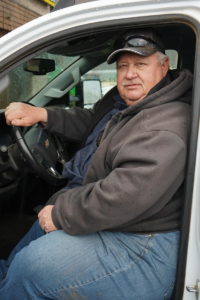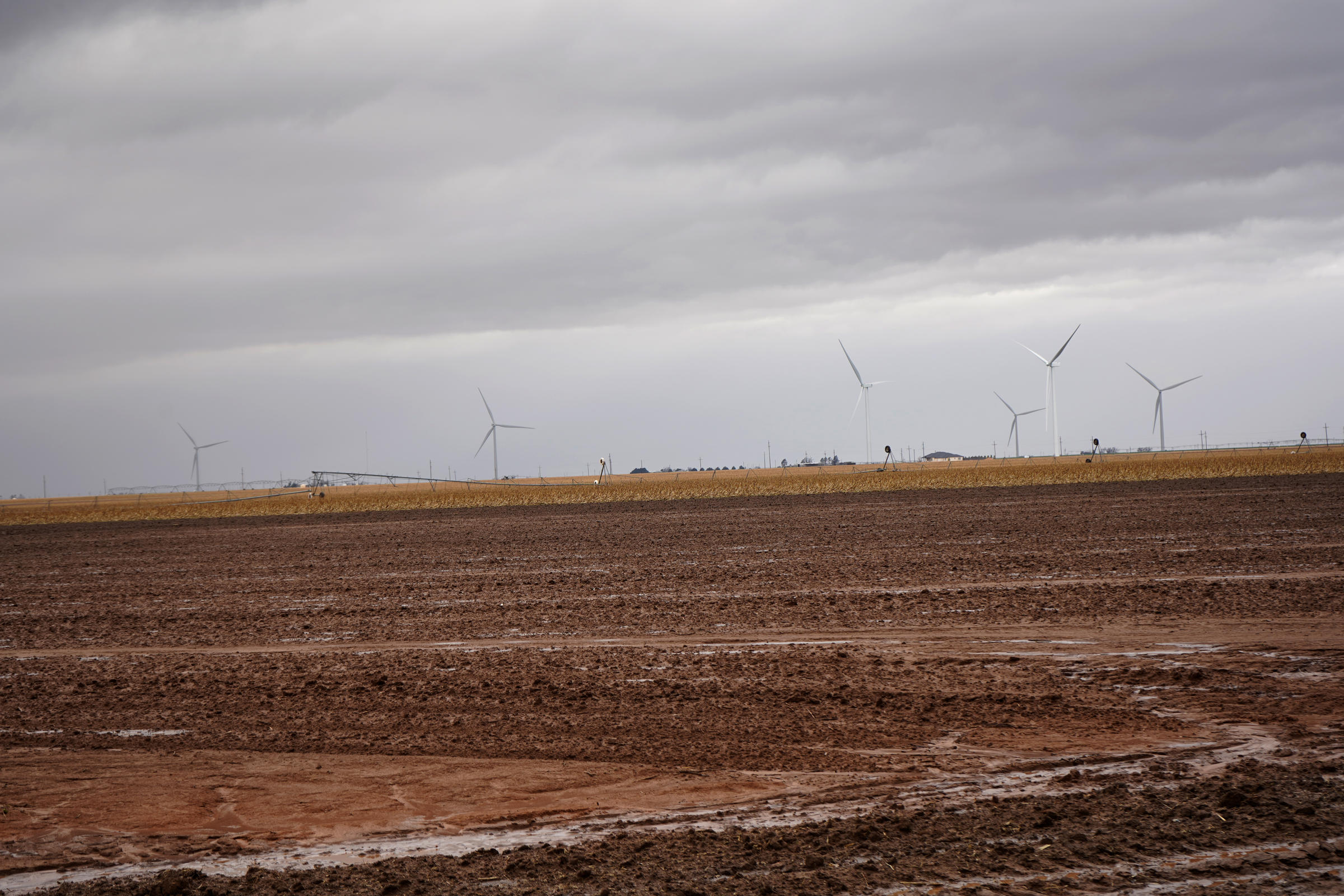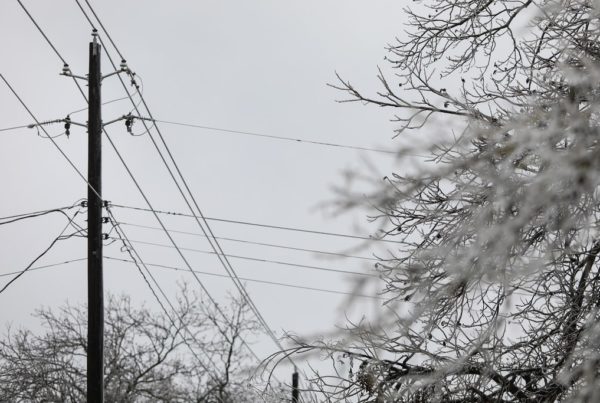
Cotton farmer Mark Schoepf. Credit Kaysie Ellingson / Texas Tech Public Media
He grew up in a cotton-farming family, and has carried on the tradition himself as he now farms the same land his grandfather once did. Several of the family’s pivot irrigations — supplemental water systems that are crucial for farming here — were flipped and twisted up from high winds the week before, and now he couldn’t fully access the damage as the dirt roads leading to them were too flooded and muddy from the latest storm.
The weather in West Texas is often unpredictable, and after 40 years, Schoepf knows that better than most.
“It seems like that’s the way our weather has been lately — it’s been the extremes,” Schoepf said. “We’re either dry, or when it rains it just dumps it. We haven’t had timely rains like we need, we’ve had more downpours.”
The irrigation systems will be fixed at a high cost, but the rain is coming at a good time as planting season is about six weeks away, and Schoepf and his fellow farmers are preparing for this year’s cotton crop.
The U.S. Drought Monitor shows that 90 percent of Texas is facing drought conditions — a persistent problem that the state has been plagued with since 2011.
“Any rain certainly helps to beat back the drought a little bit,” said Gary Skwira, meteorologist with the National Weather Service station in Lubbock. “Of course, we’ve been in a fairly prolonged drought so we’re many inches behind average. So it takes awhile before we can get rid of the drought.”
The drought, mixed with heavy rains at the wrong time, extreme heat and hail, have given farmers even more financial hardships.
Cotton is one crop that flourishes in warmer temperatures, but it can get stressed when it’s too hot and too dry — a combination that’s almost guaranteed in the High Plains as droughts can be more consistent than rainfall.
Crosby County is well-known for the quality cotton that comes from the area, and farms such as Schoepf’s contribute to the Texas High Plains — which grows about 30 percent of the nation’s cotton and cottonseed.
Schoepf said it has been harder to grow the kind of crop he had in the mid-2000s, and last year his crop was wiped out after a hail storm on June 6. Keeping the higher input costs in mind, Schoepf decided not to replant last summer. He’s hoping history doesn’t repeat itself this year, but once the cotton emerges, it’s largely out of the hands of producers.
“Ain’t nothing you can do but hope for the best,” Schoepf said. “You put it out into the elements and some years, you survive it and some years, you don’t. Most years though, you get through.”
The rainstorms this week have helped prepare the soil, and farmers in some areas received up to two inches of precipitation. But, the rain was spotty and didn’t allow for full coverage at Lloyd Arthur’s cotton farm.
“There’s some areas I have that are in real good shape on the top soil profile, but down deep we’re still lacking,” said Arthur. “This will go on down into the soil profile, and as long as we don’t have high winds and low humidity days to dry it out, then this will help.”
Arthur’s family has farmed cotton in Ralls for generations, and family lessons along with personal experience has shown Arthur just how hard it is to know what Mother Nature will bring.
“Just a month ago, we were in subzero weather with snow and now we’re getting our normal springtime thunderstorms and wind,” said Arthur. “So, here in West Texas, the wind and rain can change just in an instant.”
Steve Verett, chief executive officer for Plains Cotton Growers, said some might think farmers are never satisfied with the weather, but the issue is actually about having the right weather at the right time.
“It’s not that we’re not satisfied – our business is a timing business – so it’s critical,” said Verett. “You have to plant in a certain window, and harvest comes in a certain window, so what happens with the weather is very critical during those times.”















